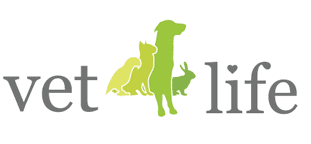We are one of a small number of vets in the UK performing keyhole surgery and have been since 2008. It’s a brilliant way of performing operations inside your pet with only very small – often less than 1cm – holes.
A camera is used to show a brightly lit and magnified picture of the area and the wide range of special surgical instruments allow us to perform a number of different procedures. We can operate in areas difficult to reach such as within the chest and even spot hidden problems.
Benefits of keyhole:
Less Pain
The size of the hole we make in your pet’s tummy is directly related to the amount of pain it feels. Wouldn’t you prefer to feel less pain after surgery? Well now your pet can too. This technique allows the surgeon to go to the organs, not the other way round, so there is far less internal trauma also. Pain after a neutering operation may be reduced by up to 65% compared to a conventional approach.
Faster Recovery
The small keyhole wound results in fewer complications after surgery and much less scarring – speeding up recovery time. Traditional surgery means it is 2-3 weeks before your dog can exercise properly again. But the keyhole technique we use means that within a few days, your pet will be back to normal and playing down the park again.
Keyhole has Many Uses
We have invested in the latest equipment that dramatically reduces the surgical time. We are also able to offer the advantage of this technique to many operations including biopsies, removal of bladder stones, foreign body retrieval as well as routine neutering.
Bitch Spay
This minimally invasive procedure results in two very small wounds compared with one larger wound. Studies have shown that neutering done in this way can be up to 65% less painful. We have just invested in new equipment that will dramatically reduce the surgical time for this procedure so your pet is even more likely to make a quicker recovery.
Liver and Pancreas Biopsy
This is an extremely quick and efficient way to examine these organs and to take samples of the tissue for analysis. Pancreatic disease in particular is very hard to diagnose and treat effectively without a biopsy. Animals undergoing the procedure are likely to be poorly so the benefits of a small incision and a quick anaesthetic is huge.
Biopsy of Other Organs
Depending on the organ, its location within the body and its appearance on ultrasound, this may be a very appropriate means of getting a sample for diagnosis. Recently we have biopsied a young dog’s kidneys using this procedure to help with our diagnosis and to plan treatment.
Removal of Retained Testicle(s)
One or more testicles may be retained in the abdominal cavity in young animals. The testicles can be removed both for behavioural reasons, as with any other reasons, but commonly to prevent cancer developing at a later date. They can be located anywhere from the kidney to the groin region, laparosocopy helps with their location and removal. The picture above is one taken during such a procedure.
Gastropexy
In deep-chested dogs, or those that are at risk of Bloat or Gastric-Dilatation and Volvulus (GDV), securing the stomach to the body wall can prevent rapidly fatal complications of this disease. Laparoscopic-assisted gastropexy can be done at the same as neutering or as a stand-alone procedure.


